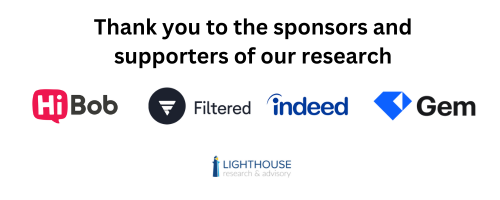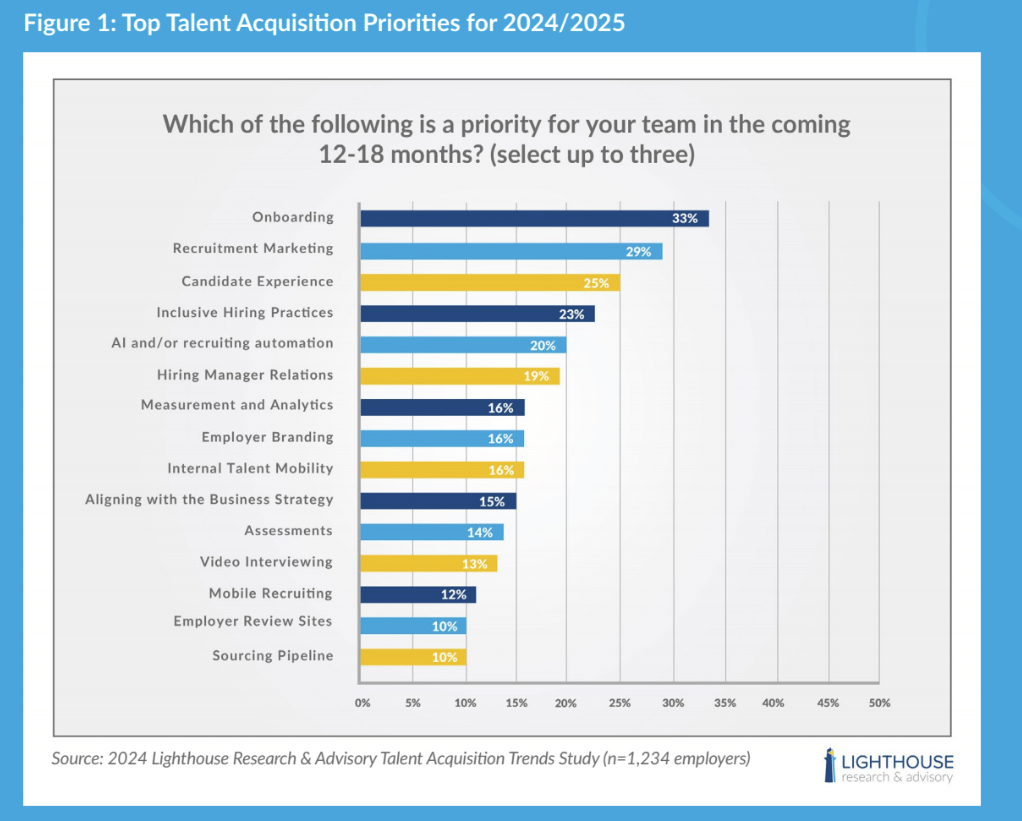2024 Talent Acquisition Trends: What’s New and What’s Next [Report]
Every year I look forward to our team’s survey and analysis of the talent acquisition market, because it’s a space that moves quickly and has a tremendous amount of innovation both in the technologies as well as the practices that employers use to create successful outcomes. This year’s report is no exception, highlighting what is changing, what’s new, and what talent teams are doing to prepare for what’s next. Here’s a snippet from the 60-page report as a preview…
Hiring today seems to be as hard as its ever been.
In spite of new technologies, insights, data, and more, employers today are still challenged to hire in a repeatable, predictable manner. In some cases, it’s a shortage of candidates for business-critical roles, regardless of whether it’s a specialized surgeon or a manual laborer.
In others, it’s a challenge to find candidates with the motivation and work ethic to do the work that needs done.
Over and over the news has pointed out the lack of candidates and the difficulty in hiring for employers across a wide range of roles and positions. From retiring Baby Boomers to changing work ethic to the rise of the side gig that decreases worker reliance on a primary employer, there’s no shortage of reasons for why it’s been harder to hire than ever. My own book Talent Scarcity, published in 2023, goes much deeper into the primary drivers for the shortage of workers and (more importantly) what employers can do about it from a hiring and retention perspective. But suffice to say that it’s a real challenge. However, using evidence and data means we can adapt, respond, and overcome challenges instead of simply waiting or hoping for different outcomes.
Speaking of data, employers have a set of priorities that have shifted quite a bit from last year. For instance, onboarding jumped to the top of the list of recruiting priorities as employers look at how they can maintain a positive candidate experience beyond day one, decrease first-day ghosting, and increase the chances that new hires “stick” with the organization.
This is an example of the insights we use to advise employers of all sizes and industries about how to position and think about their talent strategy. Every year our team at Lighthouse Research & Advisory gathers data from employers and candidates to understand the priorities, challenges, and opportunities that exist. The 2024 Talent Acquisition Trends study gathered inputs from 1,234 global employers and 1,000 global candidates across a range of topics, including:
- Employer plans for talent acquisition budgets, headcount, and technology purchases
- How companies are using hiring metrics and data today
- What recruiting automation looks like in 2024 and how it affects competitiveness
- The biggest priorities for candidate transparency (that go beyond pay)
- What it takes for unchosen candidates to walk away with a positive feeling about an employer
- And so much more
We’d like to thank our partners on this research who helped to make it possible:
- HiBob: a global HRIS with new ATS functionality for global, distributed teams
- Filtered: a screening tool that uses AI to cut through the clutter and find the most qualified candidates
- Indeed: the world’s leading destination for job seekers looking for work (and one of the best for employers looking to hire)
- Gem: a leading CRM and recruiting platform that helps innovative enterprise hiring teams hire faster and more humanly

In the report you will find insights that cover three big trends we’re watching: automation and AI usage, measurement and impact, and the value of relationships. In addition, some of the primary data can be found at the end of the report in the appendix, giving a broad look at what matters in hiring today on both sides of the equation.

Ben Eubanks is the Chief Research Officer at Lighthouse Research & Advisory. He is an author, speaker, and researcher with a passion for telling stories and making complex topics easy to understand.
His latest book Talent Scarcity answers the question every business leader has asked in recent years: “Where are all the people, and how do we get them back to work?” It shares practical and strategic recruiting and retention ideas and case studies for every employer.
His first book, Artificial Intelligence for HR, is the world’s most-cited resource on AI applications for hiring, development, and employee experience.
Ben has more than 10 years of experience both as an HR/recruiting executive as well as a researcher on workplace topics. His work is practical, relevant, and valued by practitioners from F100 firms to SMB organizations across the globe.
He has spoken to tens of thousands of HR professionals across the globe and enjoys sharing about technology, talent practices, and more. His speaking credits include the SHRM Annual Conference, Seminarium International, PeopleMatters Dubai and India, and over 100 other notable events.

